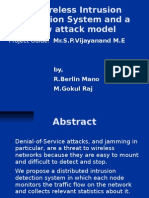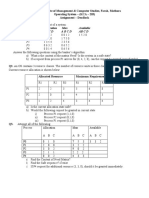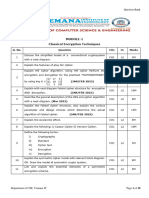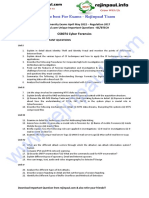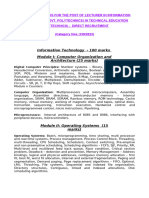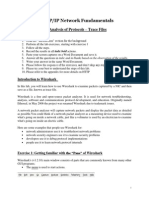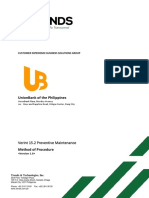0% found this document useful (0 votes)
781 views4 pagesHSST Computer Science
The document outlines the detailed syllabus for the post of Higher Secondary School Teacher (Junior) Computer Science. It is divided into 5 modules: 1) Mathematics for Computer Science, 2) Computer Organization and Architecture, 3) Programming Languages and Databases, 4) Theoretical Computer Science, and 5) Operating Systems and Computer Networks. It also includes a section on Information Technology covering Web Technologies, IT Security, and Distributed Systems and Cloud Computing. The syllabus provides details on the topics covered in each module and section along with the marks distribution. It notes that questions may also appear from other topics prescribed for the educational qualification of the post.
Uploaded by
Henna tkCopyright
© © All Rights Reserved
We take content rights seriously. If you suspect this is your content, claim it here.
Available Formats
Download as PDF, TXT or read online on Scribd
0% found this document useful (0 votes)
781 views4 pagesHSST Computer Science
The document outlines the detailed syllabus for the post of Higher Secondary School Teacher (Junior) Computer Science. It is divided into 5 modules: 1) Mathematics for Computer Science, 2) Computer Organization and Architecture, 3) Programming Languages and Databases, 4) Theoretical Computer Science, and 5) Operating Systems and Computer Networks. It also includes a section on Information Technology covering Web Technologies, IT Security, and Distributed Systems and Cloud Computing. The syllabus provides details on the topics covered in each module and section along with the marks distribution. It notes that questions may also appear from other topics prescribed for the educational qualification of the post.
Uploaded by
Henna tkCopyright
© © All Rights Reserved
We take content rights seriously. If you suspect this is your content, claim it here.
Available Formats
Download as PDF, TXT or read online on Scribd
/ 4


